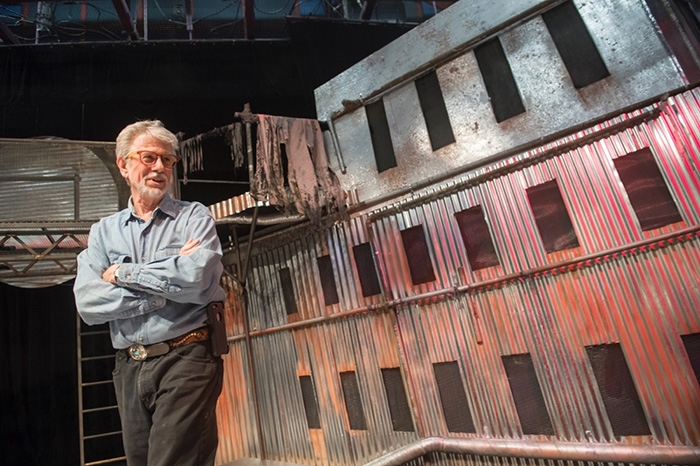In the summer of 1971, when Charles Steckler arrived on campus for a job interview, the Nott Memorial was a forgotten monolith, dilapidated, covered in vines and obscured by an overgrown hedge.
“The Nott looked like those old engravings of ancient classical buildings in Romantic ruined condition, temples of the past overtaken by time, weather and neglect,” he recalled.
But inside was a bustling makeshift performance space, a gem to the young stage designer who was trained to make theater in found spaces.
“I loved it immediately,” he said. “It was not so much a challenge as an inspiration.”
Also inside the Nott, Steckler met the eager members of Mountebanks, the student theater group. They were soon joined by a creative new director, Barry Smith, a classmate of Steckler’s at Yale’s School of Drama. (Smith retired in 1999.)
Their first task, in mid-August, was to produce a play—Madman and the Nun by Stanislaw Ignacy Witkiewicz— in time for the arrival of freshmen in early September. Perhaps fittingly, the play is an absurdist comedy that explores the boundaries of sanity. Steckler and Smith turned the inside of the Nott into a huge operating theater with life-size plaster figures watching the proceedings. The show was a hit.
And so began Steckler’s Union career.
This year, after a 46-year run, he starts his play’s next act: retirement. He received the Faculty Meritorious Award from the Alumni Council at ReUnion. Steckler has designed and built sets for a total of 121 productions, 55 shows in the Nott, 66 in the Yulman Theater, which became theater’s home when the Nott was restored in 1995.
Steckler’s stagecraft resembles his smaller works of art, some of which were shown in a recent Mandeville Gallery exhibit. When he’s not working in the theater, he creates highly detailed and whimsical collages and dioramas using found objects arranged in what he calls “aleatory actions mediated by design.” The objects include string, feathers, gilded frames, ornaments, jewelry and cutouts of sacred figures, philosophers and artists.
Likewise, his sets rely heavily on what he finds—old cars and motorcycles, beach sand, cheesecloth and chicken wire, barn wood, paper maché, elbow macaroni, bagels and sawdust. Tom Paine, a play by Paul Foster, featured an all-surrounding bear-baiting pit constructed with heavy timbers and old telephone poles. For Samuel Beckett’s Waiting for Godot, Steckler set a handmade tree into a painted canvas sky. For Sophocles’ Antigone, discarded crates from a local snowmobile dealership became a classical façade.
Steckler and his wife, Ginger, have no plans to flee to warmer climes. He plans to work in his home studio, enjoy his children and 4-year-old grandson and stick around campus. “I look forward to being on campus quite a lot to attend concerts, lectures, film screenings and performances that Union offers in abundance,” he said.

